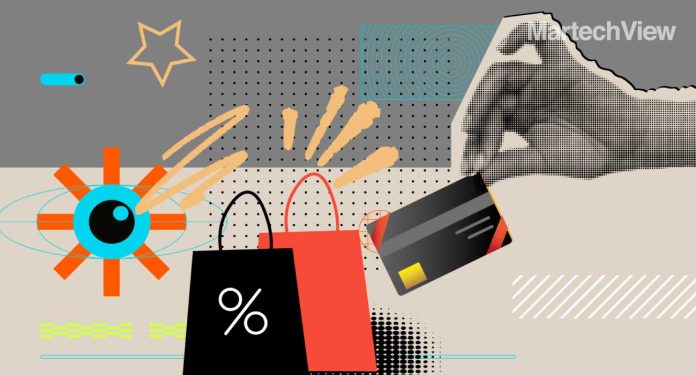Master the art of B2C marketing! Understand key differences between B2B and B2C and discover best practices and emerging trends to win over customers.
B2C marketing is a strategy by which a business sells its products and services to consumers, rather than to other businesses. B2C marketing serves as the bridge between businesses and consumers, aiming to understand and satisfy the ever-evolving demands of the modern consumer landscape. Retail storefronts, ecommerce companies, and even online streaming platforms like Netflix all accomplish their sales via B2C transactions.
What’s the difference between B2B and B2C marketing?
Simply put, business-to-business (B2B) marketing refers to the marketing of goods and services to other businesses, and business-to-consumer (B2C) marketing of goods and services to consumers. The type of audience is the key difference, leading to differences in strategies and tactics.B2B sales cycles tend to be longer (companies making software purchases, for example, will do extensive due diligence before investing in a product). On the other hand, B2C transactions are often instantaneous or close to it.
Also Read: The Email Marketing Renaissance: Beyond the Blast, Building Relationships
While both B2C and B2B campaigns sell products and services, successful B2C marketing campaigns seek to trigger and capitalize on consumer impulse to buy and the emotional response their products elicit. This means that as a marketer, you must be able to anticipate your consumers’ needs and deliver them before they realize what they want.
Luckily, in today’s digital world, there’s a plethora of data that B2C marketers can tap into to accomplish this very objective and mount successful campaigns by:
- Meticulously tracking and analyzing consumer spending.
- Understanding how consumers interact with sponsored posts on social media and which links they follow.
- Tracking what they ultimately end up buying.
Note: Direct-to-consumer (D2C) marketing is a strategy within B2C marketing. It involves selling directly to the end consumer, thus bypassing retailers, wholesalers, or marketplaces.
B2C Marketing Best Practices
Effective B2C marketing hinges on a deep understanding of consumer behavior and preferences. By leveraging customer data analytics and consumer insights, marketers can craft personalized experiences that resonate with their target audience. That said, there are fundamental best practices to adopt to give your B2C marketing efforts the best chance at success.
Also Read: The Digital Banking Illusion: How to Avoid Marketing Disappointment
Good data hygiene
Data hygiene matters in marketing, as well as how clean and healthy your data is. Without accurate, maintained, controlled, and securely stored customer data, it can be very difficult to scale business growth or remarket to existing customers. There are growing challenges for digital B2C marketers, such as the deprecation of third-party cookies coming soon and data privacy and compliance taking center stage, leading to the growth and utility of data clean rooms.
A plan to scale
In most cases, consumer products in B2C marketing have a far greater potential customer base than B2C marketing. Starting your B2C marketing foundations in a way that can scale quickly to a broad audience is a critical consideration. Questions of scale can be applied to data collection and storage, as well as choosing marketing tactics, strategies to deploy these tactics, and how to manage and communicate with a growing customer base. Choose the right tools and strategies that can scale to support growth, and you will save time and budget in the long run.
Customer relationship and retention
A good B2C marketer knows that we never stop marketing, especially to existing customers. Not only is it far more cost-efficient to retain customers and turn them into repeat customers than to market to new prospects, but customers can also become loyal advocates for your brand.
B2C digital marketing strategies
Content marketing is among the most important and effective B2C digital marketing strategies today. Defined as marketing focused on creating and distributing online content (i.e., blog posts, articles, videos, etc.), content marketing attracts and engages an audience that will purchase the content generator’s products.
YouTube, for example, provides a platform for marketers to create video content that drives consumers to online retailers. For instance, the pet product retailer Chewy creates YouTube videos called Chewtorials that combine practical information with product tie-ins.
Also Read: Martech Saturation: From Feast to Famine for Vendors
One of the most valuable channels for tactical content marketing is social media. The objective is to push content on social networks such as Facebook, Instagram, TikTok, and LinkedIn.
Have you seen a sponsored Instagram reel promoting a specific brand of tomato sauce or outdoor gear? Or perhaps a post from a brand linking back to its online store? Then you’ve seen social media marketing.
One trend we’re seeing is the continued rise of influencer marketing, where brands use individuals with large social media followings to promote their products. However, one of the most successful social media marketing tactics involves sharing, where brands create content their existing users are compelled to share with their networks.
To get customers to share content, besides including buttons/icons on websites, blogs or emails, you must understand your audience and what they value. And don’t forget, tapping into emotional engagement works.
Email marketing is another foundational and extremely successful B2C strategy. Its ROI is an impressive $36 for every $1 spent, outperforming virtually any other digital channel.
Marketers can use email in many ways, but the key lies in delivering relevant, personalized information. If you don’t know your customer’s preferences, you won’t be able to deliver email content that drives purchases.
Also Read: Forget the ESP! 4 Email Marketing Initiatives That Drive Real Growth
A word about Amazon
No discussion about B2C marketing would be complete without mentioning Amazon, the world’s largest ecommerce site, with 300 million active customer accounts and close to 2 million selling partners worldwide.
Amazon is a leader not only in marketing itself but also in providing marketing support and platforms for its sellers to market their shops and products.
Close to 30% of Amazon shoppers complete their purchases in under three minutes, while half finish in less than 15 minutes. That’s because shoppers are given exactly what they want — and Amazon learns what that is by understanding browsing and buying history.
Amazon rakes in an enormous amount of data (who their customers are, how old they are, what they buy and when, and so on), using analytics to deliver customized shopping experiences that translate into sales.
Amazon also pioneered the use of peer reviews and ratings, which have been shown to impact consumer behavior.
However, its Prime membership program sets the e-commerce benchmark for establishing and maintaining consumer relationships. The program:
Also Read: Composable CDPs: The Marketer’s Secret Weapon for Data-driven Success
- Incentivizes shopping on Amazon.com through free shipping and returns.
- Provides instant access to music, books, and other media for an annual fee.
To compete with Prime Day, Amazon’s heavily marketed sale event that’s available only to Prime members, Walmart, Target, Best Buy, and even Nordstrom have rolled out their online events. The takeaway? Membership programs compel consumers to make more online purchases.
B2C marketing trends and challenges
B2C marketers need to be flexible and adaptable. The first challenge is keeping up with constantly changing customer behavior. Customers now demand high-quality interactions that cater to their shopping preferences, but they also want these interactions to be quick and efficient. Create a YouTube video that’s too long or content that doesn’t get to the point, and the customer won’t watch or read. Understanding that attention spans are getting ever shorter will challenge B2C marketers.
To succeed, marketers must keep up with constantly evolving markets saturated with competitors all vying for customers’ attention. One strategy is to track competitors’ actions using tools and software that analyze website traffic, keywords, and other relevant data. However, perhaps the most important trend is the continued use of data analytics in digital marketing strategies. Marketers must harness the power of data to understand how their customers behave online.
Marketers find customer data and campaign performance information valuable, but it can be difficult to manage and analyze effectively. This presents a significant challenge in understanding and utilizing the data to improve marketing strategies. Done correctly, data analysis helps you improve B2C marketing strategies by learning about and understanding customer behavior.
Also Read: Cloud Data Warehouses: Rethinking the Martech Stack for the Future
B2C marketing tools
B2C marketers are under pressure to perform. The B2C marketing stack is critical in achieving good outcomes, but B2C is so varied that there is no one-size-fits-all solution. Most B2C marketers will need capabilities for ecommerce, content (content management systems and digital asset management), social media, and a way to analyze customer data.
Our digital experience platform (DXP) category features vendors who offer some or all of these solutions. Some businesses prefer to assemble their custom stacks from individual point solutions. Recognizing this, DXPs generally offer subscriptions to solutions within their platform rather than lock businesses into the entire offering.
Resources for learning more about B2C
There is a wealth of information about B2C marketing available, including our ongoing coverage of B2C and D2C brands like Apple Rose, Cherry Bombe, David’s Bridal, Lucchese, and Paul&Shark. Here’s a selection of additional resources:
- B2C Marketing: A regularly updated blog from the independent analyst firm Forrester.
- Marketers’ Guide to B2C Brand Strategy: An overview of the topic from independent analyst firm Gartner.
- The Adobe blog: Adobe is a marketing technology vendor, of course, but it processes trillions of consumer data points and is a valuable source of information on consumer behavior.
- B2C Content Marketing: A deep dive into perhaps the most important element of B2C marketing from agency Grow & Convert.
- B2B vs B2C Marketing: 5 Differences Every Marketer Needs to Know: A closer look at the differences between the spaces from online advertising agency Wordstream.
- The Ultimate Guide To Profitable B2C Marketing: Another take on strategies that work from marketing services firm ReVerb.










